Combining Climbing and Running - Why are Many Climbers Also Runners?
As more and more climbers seem to be transitioning to running and swapping tight rock boots for trainers and trail shoes, Shirin Shabestari explores how the two sports complement and contradict one another...
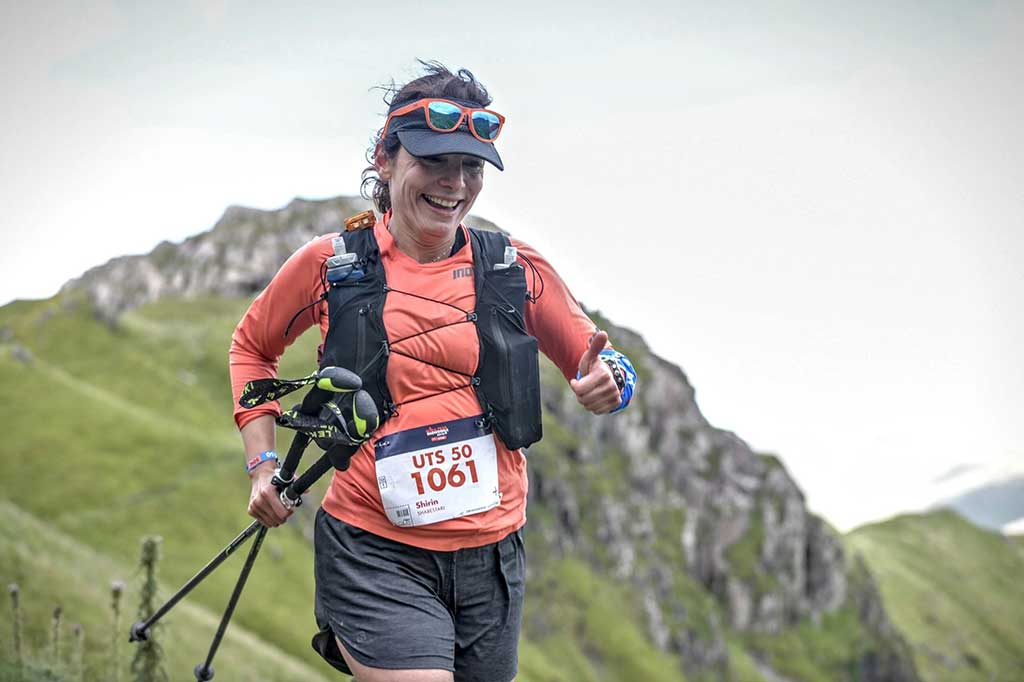
If you are a keen climber who loves a bit of running (or, as in my case... 'a lot of' running) then you likely appreciate the joys of loving two sports — maybe one a little more than the other, but you still enjoy them both enough not to want to give one up or reduce one activity significantly. Perhaps you are one of those genetically gifted individuals who excel at both and climbs and runs at an incredibly high level or like us mere mortals, you belong to the majority of climbers and runners who have settled for more mediocre levels when it comes to their achievements and goals.
According to the latest (ongoing) UKC user survey, over one-third (~36%) of this keen climbing cohort of 4,500 respondents so far have disclosed that they take part in fell running - a ~3% increase since 2020) - while just under a quarter (~22%) have ticked road running. This shows that there is clearly some cross-over between the two sports.
But why do some climbers choose to run, and how does it interact with their climbing life? Are there any benefits to doing both or does it actually have a negative effect on your climbing ambitions? Over the last few months, I have reached out to many climbers who run (or vice versa) including some prominent athletes to pick their brains and hear their perspectives. This is what I have learnt.
The 'why' – adventure or fitness? Or both?
I run for adventure! I also climb for adventure. For me, both sports originated from a love of exploration and the outdoors. Perhaps the seed was planted when my dad started taking me hiking in the mountains of Iran, where I grew up. I started climbing 12 years ago and fell in love with it after moving to the UK and taking my first steps into mountaineering and alpinism. I continued my adventures in the mountains and when life and circumstances changed and being away on long expeditions was not possible anymore, I started running out in the hills as it was quick and convenient.
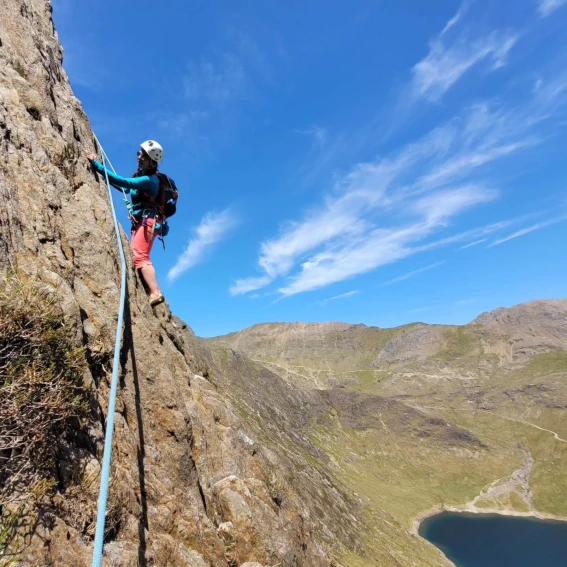 Shirin on Lliwedd. © Shirin Shabestari
Shirin on Lliwedd. © Shirin Shabestari
Before that, running was just for fitness and cardio. But now it is my way of exploring the places I love, covering more terrain in a shorter period of time. This seems to be the primary reason for a lot of climber-runners. Many told me how they incorporate running on their climbing trips as a means of fast tourism or exploring the areas around the crags.
Many of us climbers are in love with the outdoors. We love getting out and about, and seeing new places and unless you are more into mountaineering and alpinism - which naturally allow you to cover a wider area and have bigger days out - you will not see much in the environs of a local crag or bouldering area unless you get out for a walk or a run.
Climbing in Cheddar Gorge is a very different experience from running around the Gorge and seeing it from all different angles. Running along the coastal path in Pembroke will give you a whole different perspective to abseiling down to do a route. Running complements and enriches the climbing experience.
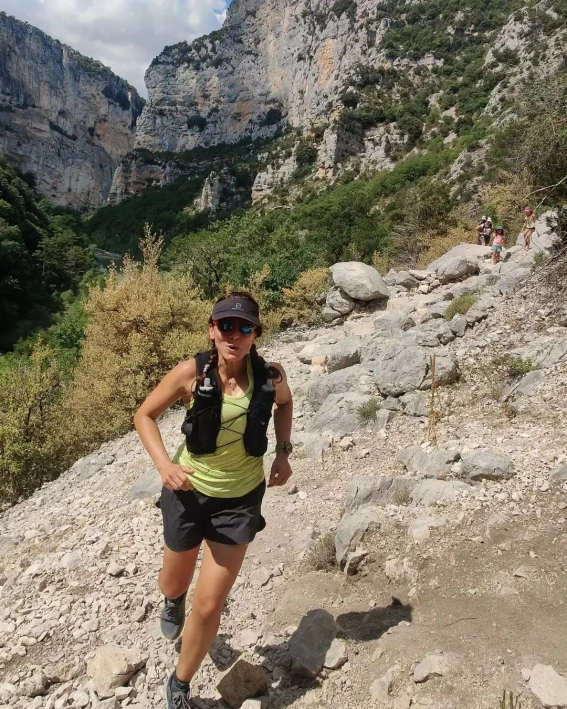 Running in the Verdon Gorge. © Shirin Shabestari
Running in the Verdon Gorge. © Shirin Shabestari
Will Birkett, an accomplished climber and runner from the Lake District, known for his speed records in combining climbing and running (UKC News), speaks passionately about getting to know his beloved home region through running, exploring maps with "all its intricate details, strange little hills and gullies". Climbing can take you up steep rocks and formidable gullies while running can you take you up and around mountains and through valleys!
A growing number of runners and climbers are bringing the two sports together by tackling Classic Rock Rounds – doing a series of climbs in a particular area and running between them. An example is the Peak District Classic Rock Round which comprises 34 miles of running between 15 of Ken Wilson's Classic Rock routes, involving 70 pitches up to VS and 4300m of ascent (the current record is held by Tom Randall). The Lakeland Classic Rock Round and the Portland Olympian are some of the other examples of combining the two sports.
The natural synergy
I spoke to UKC's very own Rob Greenwood, who has managed to excel at both (although he is too humble to say that). Rob has not only climbed some hard routes (E8 trad, 8a sport) in different climbing disciplines, he has also run all the Big Rounds (the Bob Graham, the Paddy Buckley and the Charlie Ramsay) and has done incredibly well in some of the most difficult long-distance races in the UK such as the Winter Spine Challenger South (3rd) and Montane Cheviot Goat Race (5th place), Glencoe Skyline (6th place) and many more.
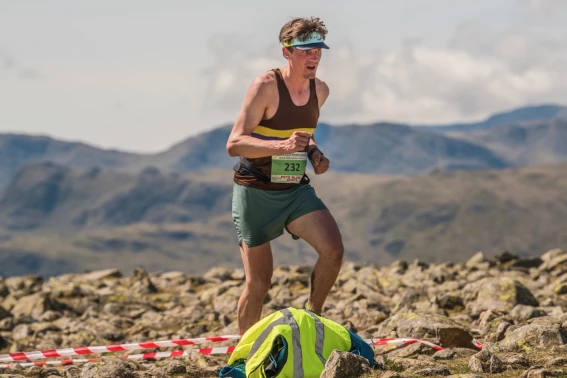 Rob Greenwood competing in the Fairfield Horseshoe English Championships Race - © Stephen Wilson - Grand Day Out Photography
Rob Greenwood competing in the Fairfield Horseshoe English Championships Race - © Stephen Wilson - Grand Day Out Photography
Rob talks about the 'natural synergy' between the two sports. When comparing the Winter Spine race with Scottish winter climbing, you can completely understand the similarity. Battling cold hands, exhaustion, layers of clothing and wet kit, navigation and route finding, riding the lows and the highs, fuelling and hydrating are challenges that are present in both.
Rob also talked about doing the Paddy Buckley Round in the same year he climbed the north faces of the Eiger, the Matterhorn and the Grandes Jorasses. To be out in the elements, having to manage yourself, with a 'toolbox of skills' as Rob says, for almost 24 hours non-stop, is not dissimilar to what you would go through on a big 24-hour round and is what probably helped him to achieve these feats in the same year as his body and mind was primed for those challenges.
Benefits - both physical and mental
For those involved in mountaineering and alpinism, mountain and trail running bring huge benefits and another way of enjoying the mountains, equipping you with more survival skills and fitness. Big approaches, hauling kit and bags definitely require strong legs and good lungs, which running can help with. You will also be naturally experienced in the admin and management of your kit, planning your fueling and hydration and well-versed in preparing for your big routes and climbs.
But let's face it. The majority of us are not climbing grand alpine routes or going for the classic big rounds in the UK (maybe not just yet!). For the majority of climbers who mainly climb indoors or do sport and trad, running is purely a bit of cardio fitness. After all, it probably is the best bang-for-your-buck cardiovascular activity available.
Climbing coach Eric Hörst hosts a fabulous podcast on the benefits of running for climbing. For those whose main focus is training for climbing, he says, running could be a great form of recovery. Short runs (30 to 40 mins of zone 2 heart rate, or conversational pace) three to four times a week - particularly on rest days - will aid recovery in between projecting hard routes or hard training sessions. The increased blood flow to tired muscles is what does the trick.
Running also helps with general conditioning and body composition. Many famous climbers such as Lynn Hill and Alex Megos run as part of their training. Many use it as a healthy way - if kept in check - of losing a bit of unwanted weight.
The benefit can also work the other way around. If you happen to be a runner who climbs, with running being your primary sport (as in my case) climbing has huge benefits. The upper body and core strength gains are great for general conditioning and more technical ascents where runners use poles. Being comfortable on rock is also a great benefit in more technical terrain such as mountain and sky running races. I am a middle-pack runner at best on trails, but the more technical the terrain, the more runners I overtake on exposed or scrambly sections (win!)
Climbing can also be an awesome form of mobility post-long runs. I tend to go for an easy climbing session, which helps reduce the stiff joints and tight muscles after long runs. It is also wonderful to completely switch off from running for a day or two and focus on something else for fun.
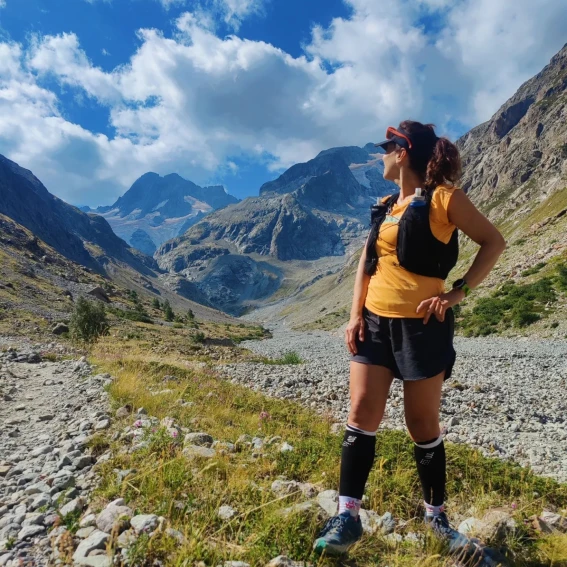 Shirin in La Berade - © Shirin Shabestari
Shirin in La Berade - © Shirin Shabestari
Running can also bring huge benefits when it comes to mental health, Many climbers who suffer from anxiety or depression, or other mental health issues, talk about how the resulting dopamine release from running has had a hugely positive impact on their mental health. This is particularly useful when a climber has suffered from an injury or simply lost a bit of mojo.
Enjoying both sports has an incredibly positive effect on identity and success, too. Brad Stulberg, the author of Peak Performance, reminds us that "when you are obsessed and your entire sense of self revolves around one thing, you become fragile. When one thing doesn't go well, which at some point it won't - your world falls apart."
The most successful people do dedicate themselves to their work fully, but having different components to their identities allows them to "emphasise and deemphasise different parts of their lives at different times." Running could be an interesting and motivating secondary sport for periods of lulls and injuries.
The mental benefits of climbing for running are huge too. Climbing can be very meditative. You learn to feel every ounce of your body and work with it. Climbers often talk of the flow state, where your brain is shut down to external distractions and your body is in a trance-like state working through the moves. This is a perfect example of mind control.
When running, we often zoom in and out of the sensations we feel. But mind control, the ability to manage the thoughts and the ebbs and flows is incredibly useful when it comes to long-distance running and you get very good at reading your body signals and interpreting them. While climbing can be taxing psychologically due to the inherent risks involved and the vigilance required, running can be more freeing mentally.
But doing a lot of running has its disadvantages if you care enough about your climbing and it can have a detrimental effect on your performance and recovery.
Disadvantages and the demands of doing both on the body
There are some climbers who run more seriously, running more than 30km a week, running 5 to 6 times a week, or doing long runs that last more than two or three hours. This volume definitely will have an impact on climbing. Tom Randall, Lattice Training founder, climber, runner and coach, believes that it is "impossible to excel in both or even get into the position where you can improve in both at the same time."
If you aim to perform at an elite level, you have to focus on one, and the best you can do is to perhaps maintain a certain level in one and improve in the other. This has definitely been the case for me. Climbing has now become secondary as I shifted my focus towards training for ultramarathons. Running 6 days per week and up to 90-100km puts a lot of strain on the body. Dave MacLeod believes that "the more serious the running, the more detrimental it would be to hard rock climbing" due to the added stress on the body.
This might come as a surprise, but in her book More Fuel You, Renee McGregor, who works with elite runners and climbers and other athletes, compares the energy expenditure of steady running and indoor climbing. She uses a 60kg athlete as an example, who would burn the same number of calories in each sport per minute. "There is a common misconception that more energy is utilised in endurance sports, but when compared minute to minute, the overall energy use for the session is the same," she writes.
Renee explains that although disciplines like climbing - or even weight training - use a different energy system compared to running (climbing does use the aerobic system but it primarily uses anaerobic systems to generate power for short bursts on hard moves), a lot of energy is used to recruit the muscles and the neurons to facilitate the eccentric (muscle-lengthening) movements.
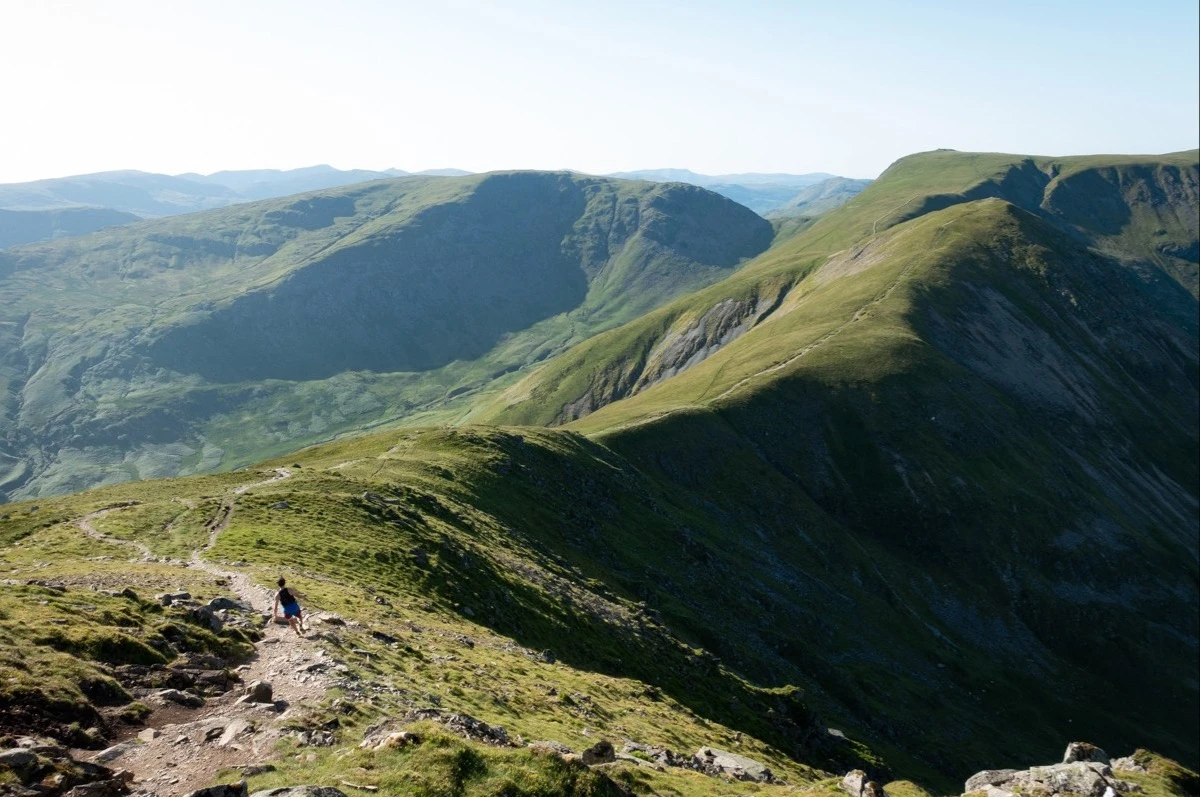 Whilst there's some bouldering in Kentmere, there isn't much, but there is some spectacular scenery and amazing running - © UKC
Whilst there's some bouldering in Kentmere, there isn't much, but there is some spectacular scenery and amazing running - © UKC
This means that if you are doing both activities in equal amounts, you are almost doubling the energy demand on the body! Depending on the intensity and duration of each exercise, this demand could be even higher. Add to this the highs and lows of life stress and the menstrual cycle for women and you are treading a fine line.
It is very easy for the body to go into calorie deficiency if you are not on top of your nutrition. Remember, weight gain can actually be a sign that you are not eating enough (do check Renee's book or podcasts, she is a great source for nutrition advice for climbers and runners). Although it is possible to climb on your running rest days and run on your non-climbing days (this is what I do) it is important to be mindful of energy intake. No guilty feelings about the pre-climb cake or the post-run indulgences! Enjoy the food and let it fuel your amazing body that allows you to do both!
Running also affects flexibility. Most runners suffer from tight hip flexors and hamstrings. A lot of runners struggle to touch their toes while bending down! Although yoga is an incredible activity to boost your climbing by aiding flexibility, Shane Benzie, an expert on running form, believes that too much flexibility reduces the elasticity of the fascia (the sheath of elastic web and tissue around our muscles and ligaments) and it is this elasticity that helps generate bounce and energy for efficient running.
Getting the balance of strength, flexibility and mobility for both sports just right is tricky, but a benefit of combining the two is that the muscles in your upper body (engaged heavily in climbing, less so while running) and your lower body (which bears the brunt in running, and are largely neglected by climbers) should be strengthened more equally in someone who does both of these sports.
Climbers often fear developing unwanted 'big legs' through running or cycling, but research suggests that muscle building through running doesn't necessarily mean 'bulking up'. The conditioning element - additional strength training, stretching, massage and injury prevention - takes patience and perhaps the advice of a coach or physio.
Another physiological phenomenon experienced by some climber-runners is that their feet can expand during intense periods of running, making wearing climbing shoes (more) uncomfortable. That's not to mention the blisters, bunions and toenail issues that can crop up in both sports. Neither are foot-friendly!
Measures of progress and goal setting
The majority of people whom I spoke to agreed that running seems to have more measurable goals. Progress is easier to track and more noticeable. While most climbers seem to progress fast at the start and then plateau, running seems to keep on giving, especially as you can focus on either speed or distance.
Modern sports watches give a lot of useful data on running performance and recovery. Natalie Berry of UKC has recently found joy in running while recovering from COVID and climbing injuries. She thinks that "running lends itself better to clear, objective goals" and that the "connection between training input and performance output feels more linear in running."
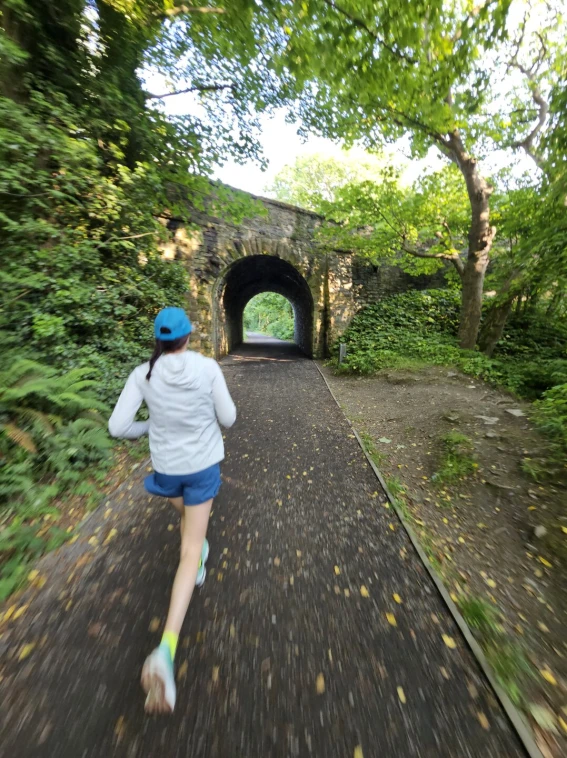 Running for fitness and exploration on the Isle of Man - © Natalie Berry
Running for fitness and exploration on the Isle of Man - © Natalie Berry
Running is so easy to fit into life. There is no need for a partner or travel. The gear required is minimal - although of course you can overindulge when it comes to shoes, running vests and watches - and you can literally run on any surface and in any weather.
John Roberts, a climber, runner and partner to the ultra runner Stephanie Case, comments on how having both sports allows you to change goals as you age since as your power diminishes in climbing and injury risk increases, stamina and endurance can continue to flourish in long-distance running. This was definitely the case with the climbing legend Ron Fawcett, who was the star of the UK climbing scene in the '70s and '80s, but gradually stepped back and got into fell running.
The art of balancing both
Let's not forget that most of us also have full-time jobs and in some cases families to look after on top of other life stress. If you are one of these people who juggles both sports on top of a busy lifestyle, hats off to you as I know how hard it is!
For athletes who like to do both, the balance is achieved in different ways. For most, they go through periods of focusing more on one than the other.
Having flexible goals and fitting them around family and life is what allows Rob Greenwood to balance both. This also seems to be the case for Calum Muskett, another accomplished climber and highly capable runner with a young family. Calum enjoys alternating periods of running and climbing and particularly enjoys running during the summer when he feels fit. He likes the social aspect of it and keeps his running flexible around his family life and climbing.
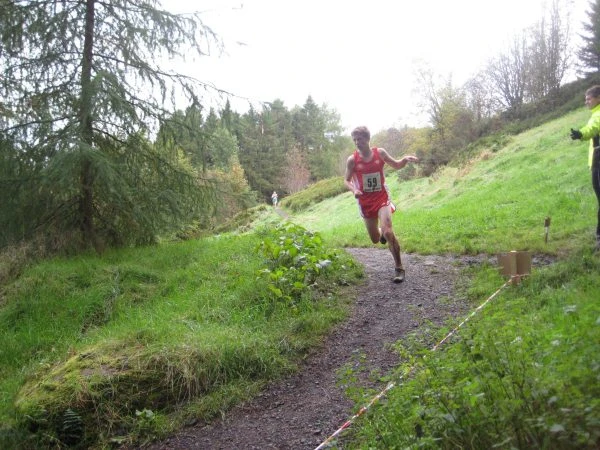 Calum Muskett in his fell running competition days. He still uses his running endurance in the mountains - © Calum Muskett
Calum Muskett in his fell running competition days. He still uses his running endurance in the mountains - © Calum Muskett
Dean Russell, a Mountaineering and Climbing Instructor based in North Wales, believes that running hinders his climbing performance. His focus shifts from one to another depending on his work, the season and the challenges he sets himself (he is currently preparing for a Paddy Buckley round).
This is also the case for Matt Cooper, a fellow MCI in North Wales, who enjoys both sports in different periods, doing more running in winter when he can't climb much outdoors and more climbing in the summer time.
GB competition climber and boulderer Jen Wood tells me that she tends to run a lot more in the off-season and uses shorter runs as a form of recovery and fast-paced tourism during her competition season and travels.
Periodisation is what works for Dan Turner, known for his hard UK bouldering. Dan has a full-time job and a young family. He runs more (up to 100km per week!) in spring and summer and drops to 12 to 20km in winter and focuses on his climbing.
Classic Rock Round star Will Birkett seems to have reached a great place this winter where he climbed and ran on the same days. For Will, the key has been high volume and low intensity. He believes that it is possible to do both, but that it requires a huge amount of motivation.
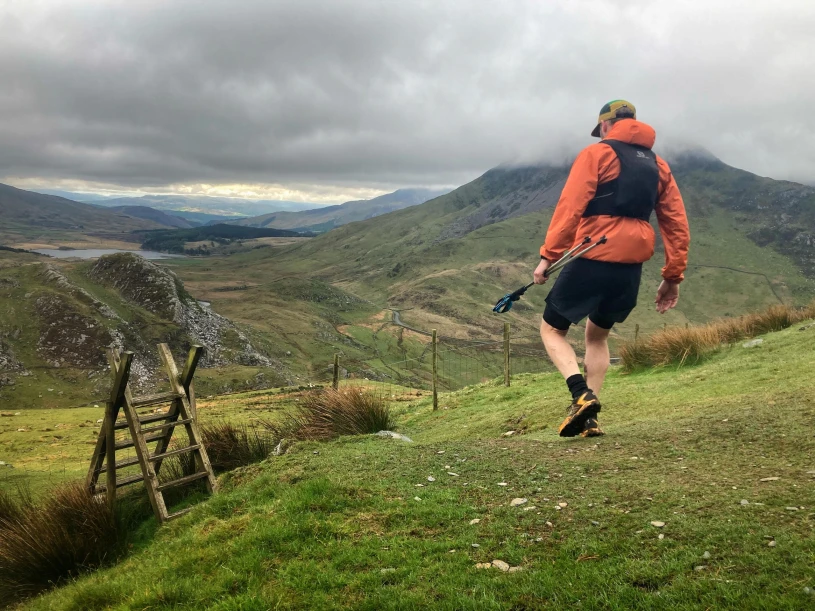 Dean Russell, mountaineering and climbing instructor and runner - © Dean Russell
Dean Russell, mountaineering and climbing instructor and runner - © Dean Russell
This seems to be the driving force behind Kevin Butters' busy lifestyle. Kevin runs his own business as a builder, which often involves manual work up to 12 hours a day. Kevin also has a young family and pursues both climbing and running to a high level. He is incredibly driven and it is obvious that he has strong values and beliefs behind his reasoning to climb and run. It gives him what he needs mentally, a sense of peace and freedom when he runs while testing his skills. He also loves to show his kids how to live life fully.
I relate to that being a mum to two boys. I do want my children to see that even at the age of 42, as a single parent with a full-time job, you can achieve great things if you are motivated and work hard. I won't be on podiums, but I can do my best living the life I love, which in my case is spending as much time in the outdoors running and climbing in my free time. It is all down to doing some soul-searching and knowing what you like to do, then being realistic about it, setting goals and shifting goals as you ride the waves of life!
Shane Ohly is an elite record-breaking runner-climber with a life-long passion for adventures in the mountains, who also organises some of the most iconic races in the UK such as the Dragon's Back Race and the Cape Wrath Ultra. I asked Shane about his view on the two sports. He said: "Don't make me choose, I love them both." I am with Shane!
So...run and climb on!
This article could not have come together if it weren't for all the climbers and runners who took the time to have a chat with me, share their perspectives and answer my questions and emails. Especial thanks to Rob Greenwood for the invaluable hour of his time, sharing his experience of climbing and running. Many thanks to Shane Ohly, Renee McGregor, Dave McLeod, Natalie Berry, Will Birkett, Tom Randall, Calum Muskett, Ellis Bland, Emma Stuart, Greg Boswell, Jennifer Wood, John Roberts, Dan Turner, Dean Russel, Kevin Butters, Tara Grosvenor, Luke Clifton, Tom Chisnall, Ozan Calgar, Nicolas Bolo, Ellie Jones, Jon Sheeley, Matt Cooper, and Marcin Siwicki. Many more were keen to help but life got in the way.
Shirin kindly shared this blog with us for use on our site. You can find the original article over on UK Climbing















